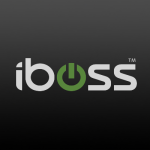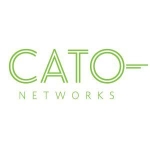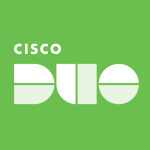What is our primary use case?
We're migrating customers from existing Cisco AnyConnect VPN to Prisma Access GlobalProtect VPN.
How has it helped my organization?
GlobalProtect VPN is a brand new concept compared to Cisco AnyConnect VPN. The huge difference is that if a user is working from home and needs access to Office 365, the way traffic is usually sent will potentially increase the delay. Some companies open split tunneling for users and they are able to send a request to Office 365 directly, but there is a loss of control from the network and security perspectives.
Since we started using GlobalProtect VPN, all the traffic is monitored, even for a user who needs access to Office 365. The traffic from the user's PC will connect to the closed and available VPN boxes, depending on the location. The traffic from that box will head to Office 365, meaning it will meet the performance and as well as security requirements. So that's one, the huge difference.
The other difference, in my experience with Cisco VPN, is that we normally control traffic based on source address, destination address, and destination port. But with Prisma Access, and using a lot of features from Palo Alto firewalls, we control the source, in particular, with the user ID or an Active Directory Group, instead of an IP address. The benefit for the user of using the user ID or Active Directory Group is in the following scenario. Suppose a user is usually in the United States but goes on a business trip to the UK. With a regular VPN, the user in the U.S. has a subnet. But when they travel to the UK, the IP just will be changed and there will be a totally different subnet. The access they had in the States may be lost when connecting from the UK. But using the user ID or Active Directory Group, the ID is always there no matter whether they are in the States, the UK, or anywhere else. That makes it more flexible for a user who is working remotely, traveling, or roaming.
In addition, performance-wise, a lot of applications have improved because the cloud-based VPN, based on the geographical location, provides a more optimized path and potentially reduces the latency. That provides better performance, but it depends on the applications.
What is most valuable?
Being able to use the user ID or Active Directory Group is one of the great features for control and providing more flexibility without worrying about IP addresses.
Prisma Access has a lot of other features. Instead of VPN, its gateway is able to decrypt traffic and, potentially, inspect it. This feature is more likely to be used by companies using Websense or a proxy server. Prisma Access or Prisma VPN has merged VPN, firewall, and some of the Websense-type and proxy functions. This means that four or five components have become one now.
The solution also protects all app traffic, meaning that users can access all apps. All traffic is sent through the Prisma devices. Even a user who reaches Office 365 with a load closed location is still controlled by the VPN boxes, and from the security and network perspectives, we can still see all of the traffic, meaning everything is under control.
In addition, there is something called Pre-logon with Prisma VPN, which means before you log in to the PC with the user ID, domain, and password, the PC automatically connects to the Prisma VPN. That means you already have some basic access, like to Office 365. In case the VPN box is having issues, the user still has access to Outlook, Teams, Word documents, et cetera. The Pre-logon features make things really convenient.
Another nice feature for users is that Prisma VPN saves the user session for seven days instead of, with Cisco VPN, only one day. As a result, the user doesn't need to connect to the VPN every day. After a week, once it expires, they will need to log in with the username and password, but it still keeps the security intact.
There is also the ability to do a HIP (Host Information Profile) check. We can check things like whether a device's operating systems are properly patched, that the antivirus software meets security requirements, and that the hard drive is encrypted. The latter is important because if the laptop is lost, the data can be stolen. A HIP check enables us to make sure the endpoint maintains the security requirements. That helps make things more secure.
And as a cloud-based solution, there are a lot of redundancies. I'm in Canada and have a gateway in Canada. In case the getaway or VPN box in Canada dies, they will automatically reroute me to New York or any other location that is available. In addition, if the cloud-based solution has an issue, we still have the on-prem firewall or VPN in place in our data centers, which means everything falls back to something that is just like Cisco VPN, but it is Palo Alto. But that is only happening in DR situations. The fact that Prisma Access is cloud-based also makes it easier to connect from our environment to cloud-computing environments.
What needs improvement?
I can't think of many things that need real improvement. But one thing that comes to mind is that when we deploy firewall rules via Panorama, we find it's a little bit slow. We have a global environment and might have 100 gateways or VPNs in the cloud. When we deploy something, it tries to deploy it one-by-one, and that can be slow. For example, one time we pushed a firewall change and the changes took about 10 minutes to finish up. If they could optimize the whole process to speed up that kind of deployment, that would be especially helpful.
For how long have I used the solution?
I have been using Prisma Access by Palo Alto Networks for close to two years, including the testing and eventually working on it in the production environment.
What do I think about the stability of the solution?
As of now, we have deployed it for 25 percent of our employees globally and, so far, it has been stable. We haven't seen a situation where it is working one day and totally stops working the next.
There are still some bugs and sometimes we encounter issues and we have to open a case with Palo Alto to ask them to fix things. Because this is a new solution in the market, having been introduced two or three years ago, the overall stability is good, but they can still enhance that aspect even more.
What do I think about the scalability of the solution?
The scalability is pretty good. Since we bought it, we have added more and more users and had no issues. And because it's cloud-based, they can add VPN boxes in the cloud and, for us, that process is transparent, which is pretty good.
How are customer service and support?
All in all, tech support has satisfied us. We are a big customer, and they have two tech engineers working with us when we deploy and when we do a migration. We always have them with us, especially via conference calls.
The support is timely, but there is still some room for improvement because, when we open cases with them, some agents are not as timely about fixing problems as others.
But overall, we are satisfied with their services.
How would you rate customer service and support?
How was the initial setup?
The initial setup was not too complicated, but it still took a little time to get familiar with it. The good thing is that Prisma VPN uses our existing Panorama centralized management tool, which we use to manage Palo Alto firewalls and VPNs. Because the centralized management tool is very familiar to us, it helped us in using the new solution. But, of course, since it is a cloud-based VPN, it did take a little bit of time to get used to, but after we got used to it, it became straightforward.
What's my experience with pricing, setup cost, and licensing?
It is pretty expensive. We have to balance the cost of some features. They need to work on some of the services and products, price-wise.
What other advice do I have?
The importance of the combination of the solution's traffic analysis, threat prevention, URL filtering, and segmentation depends on the business. Some business lines are very critical so we might potentially apply more features to them, but everything has pros and cons. Applying more features potentially slows down the performance, so we have to balance between security and performance. But so far, in most situations, we don't have any concerns because we already apply the HIP check to make sure the laptop side meets all kinds of security requirements, based on our internal policies. Also, we are able to see all the traffic logs. Even though it's a huge amount of data, and we're not currently doing so, we're potentially able to investigate or analyze things.
It is a good solution and a new direction for many companies, especially big companies with global offices. Overall, the security that Prisma Access provides definitely meets our security requirements. Otherwise, we wouldn't be using this solution. The majority of companies, including a bank or any other financial company, should be happy with this solution.
Disclosure: My company does not have a business relationship with this vendor other than being a customer.















